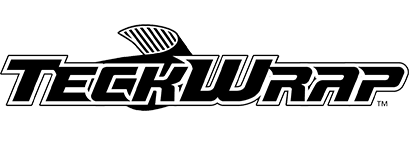How to Make Backing Paper Template for Wrapping
There are always different kinds of challenges when it comes to color change wrapping: prepping, film stretching, cutting, angling… all kinds of “test” you have to go through. But today, we will be introducing you a method where you can basically do your wrapping in zero stress.
What we are going to show you today is to use the backing paper liner of your film to create a template for color change project, which will surely save you from a lot of troubles, because when you are laying the panel out in normal cases, there are times the material might fold in itself, or it would wrinkle, or it might pick up dirt from the ground…
However, it protects you from those uncertainties as you use these templates that are made of something about to go in the bin anyway.
First, at all, take a giant piece of a backing paper liner, put it on the vehicle that you are about to wrap with magnets on it. This is actually the same process we will normally do for color changing. But we are just using backing paper instead of the actual material this time.
Draw the shape of each part out on the paper, but make sure you leave about three inches (or around nine centimetres) extra bleed, and make your cut. The good thing about using a backing paper here is that you do not have to worry too much about making the bad cut(s) here, because you can just go grab another piece. Yet it would be a costly mistake if you made a bad cut with the actual material because you might then have to grab another three to four yard of film to re-do it.
Once you set all those templates for different parts (back fender, front/back door, rocker panel, etc.) of the vehicle, move over to the cutting table, where you have the actual material there already. And place those templates flat on the film with masking tapes around and secure it on the film surface. For this demonstration, we are using a gloss film, which is good because it has high surface energy so the masking tape sticks very well there.
When everything is set, you can cut the shape out from the film – and remember to cut exactly the same to the backing paper shape that you made before, because this is the reason why we use this method, which is to help you make precise cuts where there is zero stress for wrapping. With the backing paper template, there is a grid on the liner, which will help you make straight cut as you go through the process.
Also, there is another good thing about using this template method: The chance of making mistakes would actually go down to zero as you make your cutting on a flat table.
Even better, you can cut out both sides, for example, both the driver and the passenger side, with just one template. Thus, using a backing paper template in your wrapping process will help save you a lot of time as well.
But there are things you might have to consider even though this method is far more convenient. For an instant, you might have to think about the direction when your material is directional so that you can make sure it goes the same direction on the car.
Do not forget to label the liner and materials with a water-soluble pen as you are cutting them out though. So as you wrap each section with one piece after another, saving the rest for later, there is no way that excesses material will pick up dust or dirt during the process. It is just a very straight forward production.
However, we should also pay attention as we do our cutting on the table, especially when you have a film that is very sensitive, because it might scratch if you are not cautious enough. So just be very careful as you roll out the material. Once everything is set, you can put the backing paper over to the trash and start your actual wrapping.
If you have not tried this method out, give it a shot and it will surely surprise you!

